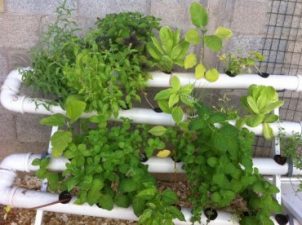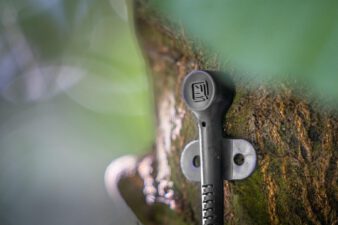10,000 years after inventing agriculture, will we 7 billion take this strange next step?
A Netherlands-based company called PlantLab has devised a method for growing plants indoors using an unearthly pink-purple light made by a combination of red and blue LED lights, instead of sunlight.
Significantly, for a sustainable future anywhere on a planet with 7 billion already – and 9 billion by century’s end – this means we could grow crops with 90 percent less water. Agriculture uses most of the water around the world.
Nowhere is this need for managing on less water more crucial than in the countries of the Middle East and Africa – from Saudi Arabia and Israel, to Yemen and the Sudan – that face the threat of real water scarcity already.
Using lights to grow hydroponically
PlantLab has invented a way to grow plants under LED lights indoors, with all the water recycled within the indoor environment for reuse. Plants, it turns out, are not that dependent on using the sun for photosynthesis. And they certainly don’t mind being separated from their pests. And they are fine with 90 percent less water, if they get it over and over again.
Importantly, in an age of peak oil, PlantLab has also found a way to grow crops that eliminates the two ways that food is dependent on oil.
They have engineered the crops to be able to be grown using fewer fertilizers – which are made from oil.
(Related: 7 Agricultural Solutions That Will Save the Middle East)
The second huge use of oil is in transporting food. But because this indoor habitat can be replicated anywhere in the world, regardless of climate or season – food would no longer rack up unsustainable carbon miles on the way to your table.
The benefits of urban agriculture
Because these eerie new farms can be many stories high, crops can be grown within cities, leaving the most possible land to work naturally as nature’s utility, cleaning the air we breathe and the water we drink, instead of being used for agribusiness that pollutes our rivers with fertilizer runoff from agribusiness.
And, being indoors, away from their pests, there is no need for pesticides. You can imagine how that might ultimately begin to affect their evolution, if we change farming so much that we have have generations of plants grown separated from their natural pests in the open. We live in interesting times.
But PlantLab believes we must rethink food production to survive.
“In order to keep a planet that’s worth living on, we have to change our methods,” says PlantLab’s Gertjan Meeuws in an interview with the Associated Press.
“The methods PlantLab is suggesting are revolutionary. The company grows plants indoors, vertically stacking acres upon acres of plants. They use LED lamps to grow the plants and water them with a slow trickle that drains through the soil and is collected and reused. The neon pink light of the lamps make the space look more like a nightclub than an indoor farm.
Computers capture over 160,000 reports per second to determine the exact amount, cycle, and color spectrum of light that’s optimal for the plant, as well as water, so that no resource is wasted and the plant is neither undernourished nor overexposed.
How do LED grow lights work?

Plants convert light from the sun into energy through the process of photosynthesis, but plants only need some parts of the sun’s color spectrum. Blue and red LEDs can provide just the light a plant needs, making the process more efficient and growing a stronger, healthier plant.
LEDs and climate-controlled indoor farms not only use less energy, less water, and less space than traditional agriculture; they also reduce the unpredictability of our food supply. Indoor farms aren’t at the mercy of droughts, torrential rains, unexpected frosts, and pests. They reduce the danger of food shortages and waste.
Apples from Chile, asparagus from Peru—an average of six to 12 percent of every dollar we spend on food goes to transportation costs.
Traditionally, most agriculture has been limited to large swaths of land with rich soil, controllable pests, and a predictable climate, but even under optimum conditions traditional methods of agriculture drain our water supply, require intensive resources, and produce a crop dependent on an undependable climate.
Until now, vertical greenhouses like AeroFarms Vertical Farming have seemed a little impractical, because our one and only real sun really needs to reach deep into each floor to ripen food crops, but this unearthly pink agriculture would solve that.
But are we ready for such a drastic step?
Related:
Epic Sahara Forest Project Unveils Pilot Plant in Qatar
Water & The Middle East At A Glance (Infographic)
End Hunger: Food And Vertical Farming In The Middle East




“Pink” LEDs? Never heard of them…
Here’s a solution to the food problem in the Middle East:
Growtainers. Specially built 40′ shipping containers with HVAC systems, LED lighting, Hydroponics and state of the art controls for vertical production. Contact us for more information.
I am in Qatar (Arabian gulf) I things it suitable for this type of desert countries….I want know more about this please give me more information about this……..my moble no:00974 55356351
This is great. Love it.